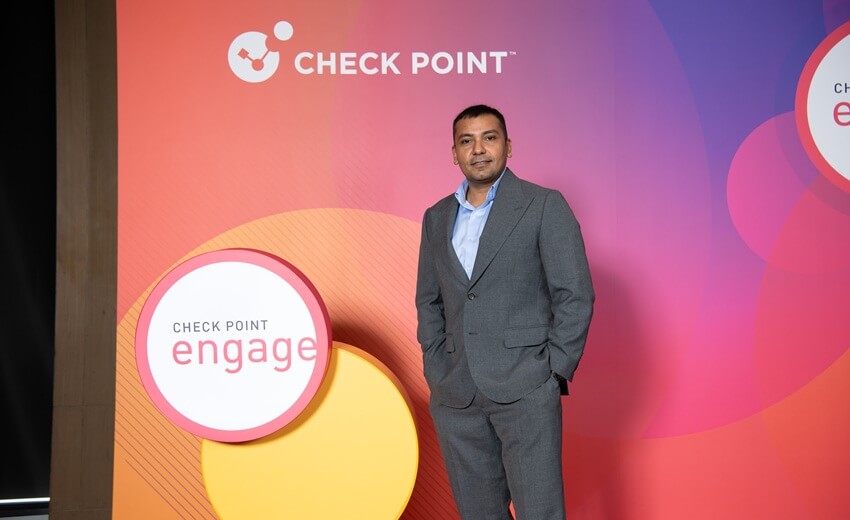Check Point Software Technologies yesterday released its
2025 Cyber Security Report, its first-ever
AI Security Report and key findings from its
Threat Intelligence Report. All three reports were published by Check Point Research, the company's threat intelligence division, and delve into the cyber threats faced in today's AI-powered, hyperconnected world.
Jayant Dave, CISO for Asia Pacific and Japan, and Bisham Kishnani, Head of Security Engineering for the same region, provided an in-depth technical analysis of Check Point's AI cybersecurity strategies during the Check Point Engage conference, and introduced the company's prediction and architecture in leading cybersecurity into the AI era.
Key global cybersecurity threat trends
As the digital world evolves, threats to organizations have grown increasingly complex, widespread and destructive. The
2025 Cyber Security Report identifies five major escalating threat trends worldwide:
- Escalation of cyber warfare: False information and hacker campaigns are increasing, with AI accelerating the spread of disinformation and influence operations.
- Ransomware tactics shift to data extortion: Cybercriminals now focus on data leakage-based extortion.
- Spike in info-stealing malware: Especially targeting BYOD devices to steal corporate credentials.
- Exploitation of edge device vulnerabilities: These are used as entry points into corporate networks.
- Complex cloud management: Leads to heightened exposure and risk for organizations.
 Jayant Dave, CISO for Asia Pacific and Japan
Jayant Dave, CISO for Asia Pacific and Japan
at Check Point
“Hyperconnected world is a reality. You need a different architecture to connect and secure this kind of environment, because everything is connected,” said Bisham Kishnani. “To top it up, we are in an AI era. This is actually causing a massive disruption in the threat landscape.”
Jayant Dave emphasized the evolving pace of risk, saying, “AI comes with speed and sophistication. What once cost $400 an hour in DDoS attacks now costs $10. AI-powered attacks are faster, cheaper and far more scalable. Defenders must evolve—we can't rely on traditional methods anymore.”
Generative AI intensifies threats and redefines the digital trust boundary
“We live in a time which is very hyperconnected; threat vectors have become broader. AI is now being used extensively by both enterprises and attackers,” said Dave. “Enterprise AI adoption is already at 51%, but it also introduces risks such as unapproved use, data exposure, and sensitive information leakage.”
“We cannot leverage the old way of doing things,” he explained. “AI can help automate first-level SOC tasks, detect patterns, and manage volumes of events more efficiently. But it's not a silver bullet—without proper governance, AI can increase complexity and cost.”
Despite AI transforming all industries, it also introduces new risks—especially by blurring the line between real and fake in the digital world. Check Point’s newly published
AI Security Report identifies four core areas where trust is eroding:
- AI-enhanced impersonation & social engineering: Attackers use AI to generate convincing phishing emails, fake voices, and deepfake videos.
- LLM data poisoning & disinformation: Attackers manipulate AI training data to distort outputs.
- AI-generated malware and data mining: Criminals use AI to design and optimize malware, automate DDoS attacks and refine credential theft.
- Weaponization and hijacking of AI models: From stolen LLM accounts to custom malicious models like FraudGPT and WormGPT, attackers breach security to commercialize AI for hacking and scams on the dark web.
Taiwan faces threats more than the global average
 Bisham Kishnani, Head of Security Engineering
Bisham Kishnani, Head of Security Engineering
at Check Point
According to the
Threat Intelligence Report, from October 2024 to April 2025, organizations in Taiwan experienced an average of 4,182 attacks per week, more than double the global average of 1,917. In the past 30 days, 87% of malicious files in Taiwan were delivered via email.
The
AI Security Report also reveals that over 51% of enterprise networks use AI services each month. However, among generative AI prompts used on corporate devices, 1.25% (1 in 80) posed a high risk of data leakage, and 7.5% contained potentially sensitive information.
Building an AI-aware cybersecurity architecture
To tackle ever-evolving cybersecurity challenges, organizations should adopt an AI-aware architecture with the following strategies:
- AI-Assisted threat detection & hunting: Use AI to detect generative threats like synthetic phishing content and deepfakes.
- Enhanced authentication: Go beyond traditional methods by implementing multi-factor authentication and recognizing that AI-driven impersonation (text, voice, image) makes blind trust in digital identities obsolete.
- AI-contextual threat intelligence: Equip security teams with tools to identify and respond to AI-powered attack tactics.
“We are the only vendor able to deliver a uniform framework that natively integrates with leading AI infrastructure, including NVIDIA GPUs,” said Kishnani. “This allows us to detect and prevent advanced threats like prompt injection and model jailbreaks in real time.”
“Our mission is to build a fully autonomous cybersecurity framework,” Kishnani continued. “Our AI engines—55 out of 95—sync across global deployments in under two seconds. That helps deliver a 99.9% prevention rate, as independently verified.”
Navigating hybrid network challenges
Hybrid mesh architectures, increasingly adopted by enterprises, present unique challenges. Not all edge devices in a distributed network have the same computing power or security capabilities, which can create blind spots in protection and performance.
“In most environments, some endpoints don't have enough compute to run full security workloads,” explained Kishnani. “That's why we designed a flexible hybrid mesh. If an edge device can't handle advanced security tasks, the system intelligently routes traffic to more capable nodes—either in the data center or cloud—optimizing performance without compromising protection.”
Check Point's hybrid mesh model combines direct, secure connectivity with distributed enforcement points, minimizing latency and enabling scalable protection without the bottlenecks of traditional SASE models.
In response to a hyperconnected and rapidly evolving cybersecurity threat landscape, Check Point also emphasizes the importance of an
open architecture platform. Only with an open and flexible cybersecurity framework can organizations effectively integrate security systems and tools from multiple vendors, enhance overall visibility and responsiveness, and achieve a higher level of protection across distributed and complex infrastructures.
Check Point's Infinity Platform is built on this very principle—providing enterprises with a scalable, integrable and future-ready security platform to safeguard the hyperconnected digital world.